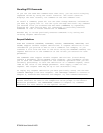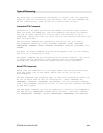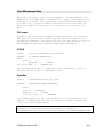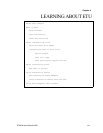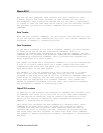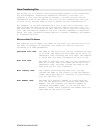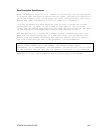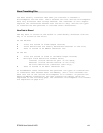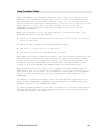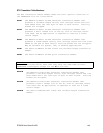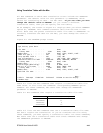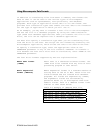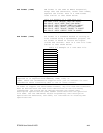
ETU400 User Guide 011603
4-6
Data Description Specifications
When you create a physical file (*DATA) on the AS/400, you can define the
file using Data Description Specifications (DDS). The DDS file definition
tells the computer many things about the file, including where one field
begins and ends, and whether a field is numeric or alphabetic.
It's not necessary for each physical file to have a unique set of DDS
specifications. In fact, if the format is the same for two different
files, you can define them both with the same DDS specifications (be sure
to use different file names when creating the physical files).
The DDS definition is stored as a member within a source physical file.
When you are transferring data to a new host file, you can specify the
source file and member containing the DDS that define the file. Specify
the file containing the DDS in the parameter called FLDDEFFILE.
NOTE: If, when transferring data to a new host file, you specify both a
record length (RECL) and a DDS member, the record length takes
precedence. As a consequence, the DDS member you specify will not be used
in the transfer and the data may not appear on the host as you expected.
Appendix C in this guide explains how to create DDS on the AS/400.



